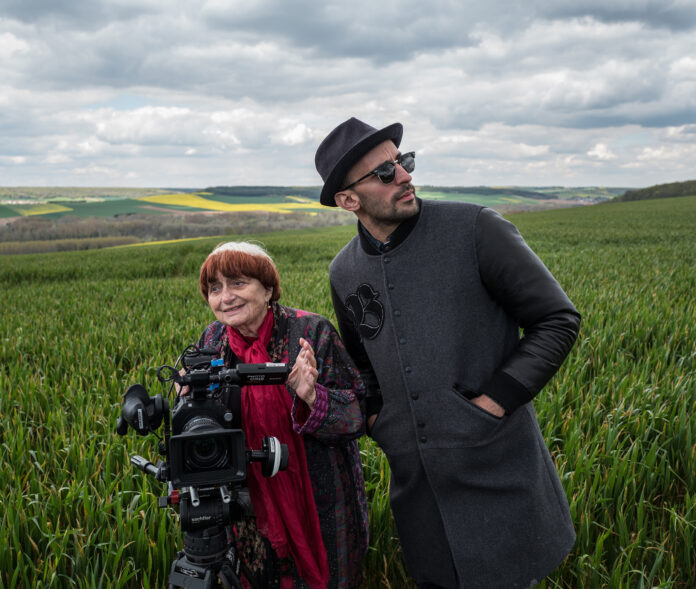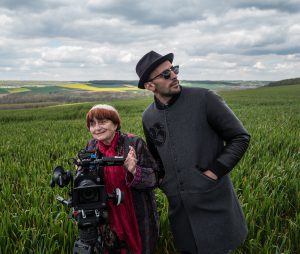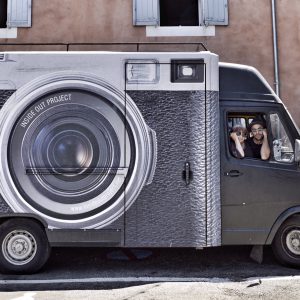
French road trip documentary reveals art in the ordinary
By Dana DuGan


When Agnès Varda, 90, and JR, 35, got together to make “Faces Places,” which has the French title “Visages Villages,” the two avant-garde artists created a piece of art in the form of film.
Artists and film have long been intertwined: think of contemporary artist Julian Schnabel’s movies, or Man Ray’s “Emak-Bakia,” a movie of disjointed images. But we mostly recall the movies of French directors such as Luis Buñuel, known for films including “The Discreet Charm of the Bourgeoisie” and “Belle de Jour,” who teamed up with surrealist artist Salvador Dali in 1929 for “Un Chien Andalou.”
Film as art is one thing; artists making films is another. The directors who were a part of the French new wave—sometimes referred to as nouvelle vague—of the late 1950s-1970s, were pioneers. They brought a new ambiguous sensibility to the medium. A filmmaker since she was in her late 20s, Varda is a filmmaking legend with dozens of movies to her credit.
Her experimental style stood out from the beginning.
Varda was the only woman in a group of men such as Claude Chabrol, François Truffaut, Jean-Luc Godard, and Jacques Demy, to whom she was married. Her first film, “La Pointe Courte,” made for a pittance, set up a style that remains to this day. She retains control over scriptwriting and directing. She only shoots on location, and casts both professional and nonprofessional actors. But, despite her groundbreaking work, Varda and her films are little known outside of France and among cinephiles. Her work, which also includes photographs and art installations, focuses on documentary realism, feminist issues and social commentary.
JR is known for his gigantic portraits of people taken all over the world that are then shown in situ, on the side of buildings and other large-scale venues.
Varda and JR are not so different, after all. And their collaboration uses all of her experience while upping the concept by shooting and processing photographs—JR calls himself a “photograffeur”—using his mobile camera truck.
Nominated for an Academy Award in 2017, the cross-generational road trip reveals people through rural France—part character drama (with real-life characters), documentary, and part essay-film. Visually, JR’s work transforms the film into a living museum.
Kristine Bretall, the Sun Valley Center’s director of performing arts, chose the film because of its theme of revealing the art in real life. “Faces Places” was shot in rural France and depicts people who are feeling forgotten or whose work has disappeared, leaving them anxious and nostalgic.
Coincidentally, right now there are protests in the countryside of France, and the Sun Valley Center’s BIG IDEA exhibition is called “We the People: Protest and Patriotism.”
“When I’m planning our film series,” said Bretall, “I like to hook into the BIG IDEA, but also take the opportunity to bring to the community films that are highly regarded. But I also want to touch on the art world, showing films about art that are also engaging.”
When she booked the film, Bretall could not have foreseen the protests in France, where the theme is of “the little guy feeling left behind,” she said. “While there is no connection, the irony is that protests all over the world are a way for people who don’t have access to power to find a voice.”
“Faces Places” is a touching, poignant film, and not in any way a “confusing new-wave French film,” Bretall said, laughing. Instead, it “celebrates people who live in tiny villages, and shows loss and memory and what happens as we age and change; how life is woven and rewoven.”
Varda and JR met in 2015. They wanted to shoot a film in the countryside of France, while traveling in JR’s photographic truck. Through chance encounters and prepared projects, they met others, listening to them and photographing them. They also appear in the documentary and their friendship evolves throughout the film shoot as they travel to the places that feel forgotten.
“Seeing the documentary in a theatre with the community is important,” Bretall said. “Being able to do this at the Magic Lantern—for two shows—is convenient and comfortable.”
